(Nantes 1836 – Chenecey-Buillon 1902)
Madame Eugène Pegg walking at Saint Germain
H. 49 cm; L. 32 cm
Watercolor over pencil lines
Titled, located and dated on the back
Provenance: June 15, 1999, Christie's New York
Born in Nantes, trained at the Ecole des Beaux-Arts in Paris and having led a career on both sides of the Manche, Jacques Joseph Tissot, is a major artist of the second half of the 19th century, both ambiguous and fascinating. At the end of the 1850s, Tissot made his debut in the capital where his passion for Japanese art and his relationships with the most influential circles nourished his painting. In the Parisian melting pot, at a time when the modernity theorized by Baudelaire found its expression under the brush of Whisler, Manet or Degas, Tissot and his dandy spirit were appreciated by society. After the war of 1870 and the Paris Commune, he settled in London and pursued a prominent career which saw him navigate the best spheres. Little by little, his work focuses on the radiant then declining figure of his companion Kathleen Newton, constantly present in his paintings. The death of the latter in 1882 sealed Tissot's return to France. His career continues in the description of the multiple variations of the Parisienne, the subject of a large cycle (La Femme à Paris), and the explorations of mystical and religious subjects, with the cycle of the Prodigal Son and the hundreds of illustrations of the Bible, which made the artist immensely famous at the turn of the 19th to the 20th century.
It was in August 1879 that Tissot produced this sheet in the park of Saint Germain en Laye, in front of a body of water that can only be distinguished by the gray arcuate shape in the background. Certainly at the same time, he produced another sheet of the same format with the same framing representing Lady Mary Craven, whose watercolor is much more accomplished than our portrait, but whose finesse has disappeared by dissipating the lines under the color. Our elegant woman dressed in a loose dress left white is a completely voluntary representation of Tissot in “non-finito”. Only the backgrounds are very lightly watercolored to give relief and a situation to the composition, like the hair, the face and the little bibi worn by this red-haired woman. Also note the hand holding the umbrella, very lightly tinted with pink to make it stand out from the body. If Tissot left this sheet unfinished, it is because it suited him with its touching simplicity, which the other work created in the same place completely lost.



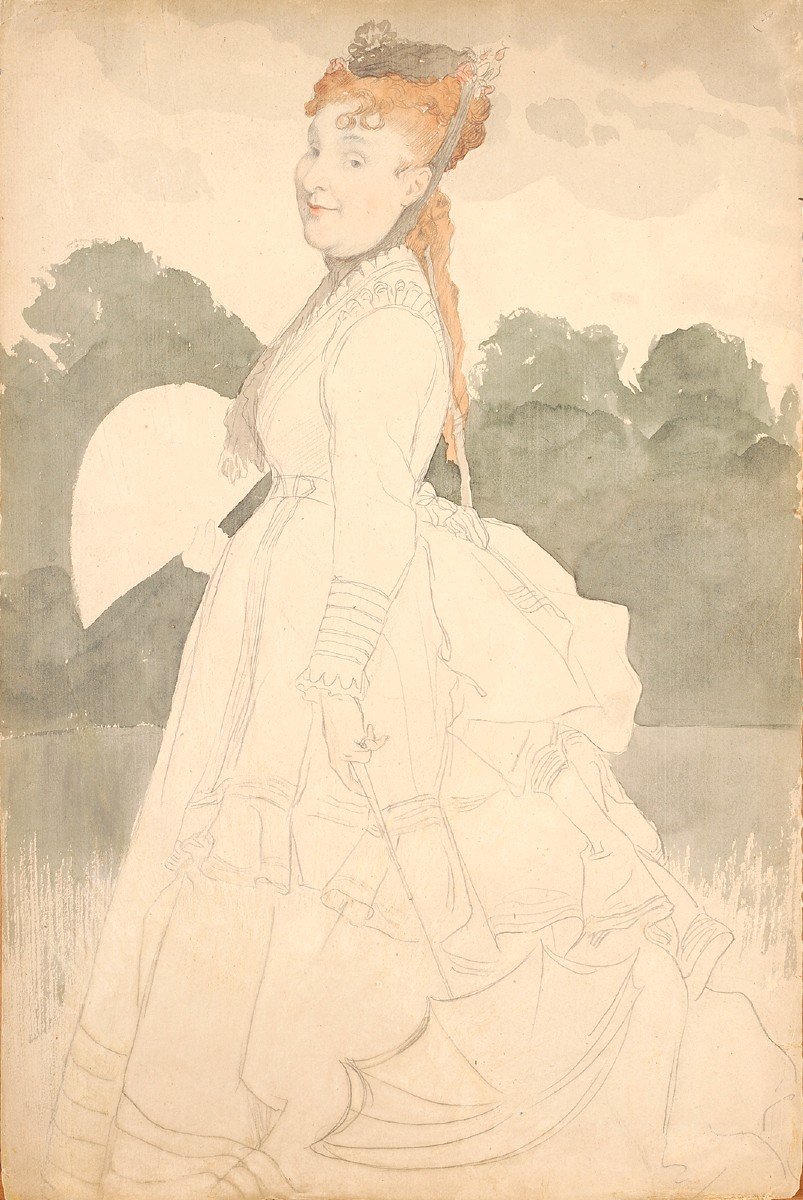
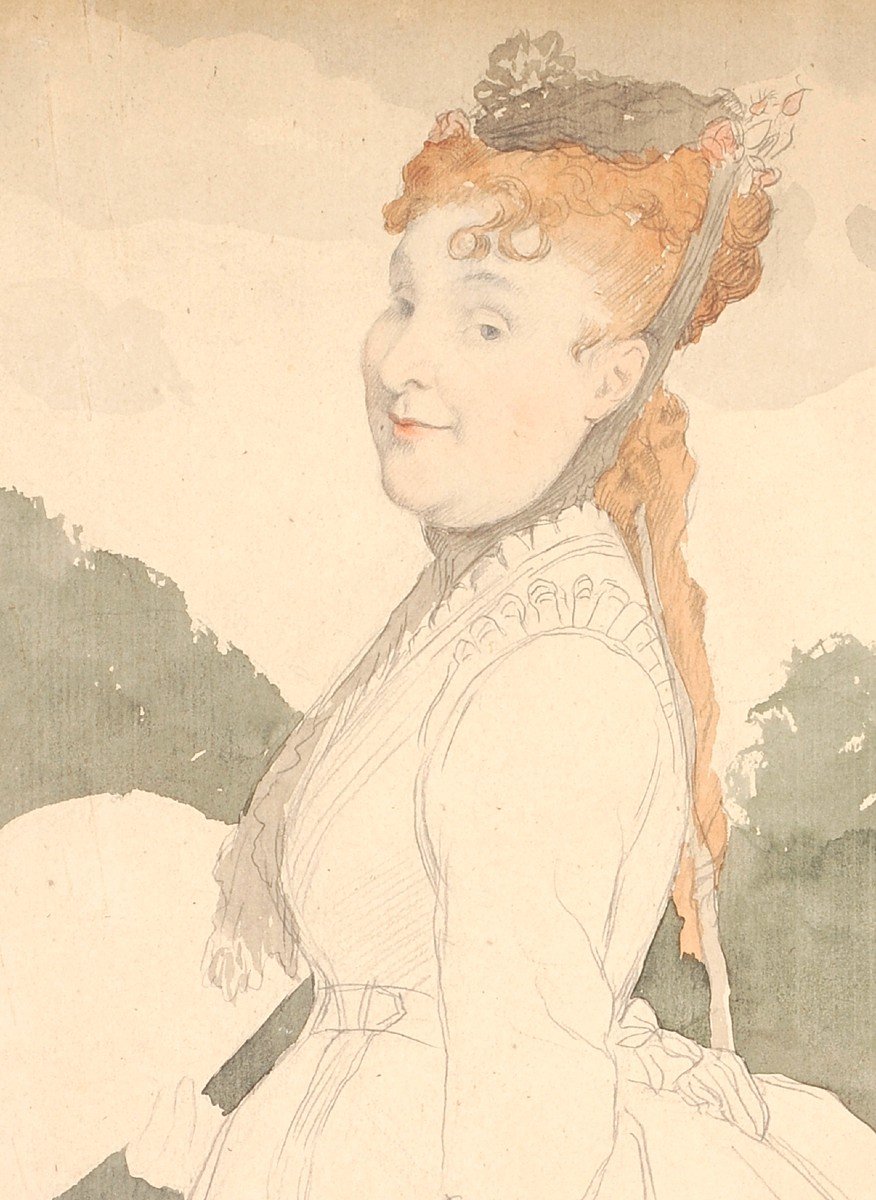
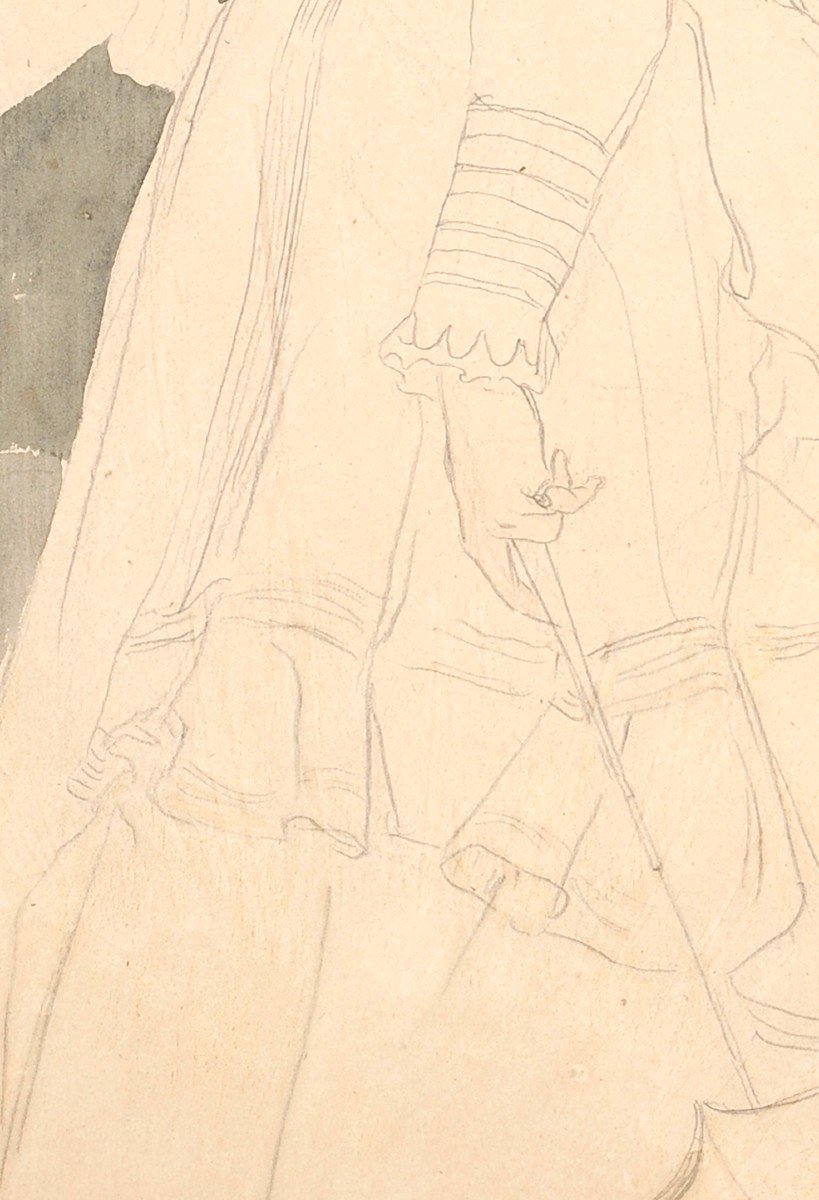


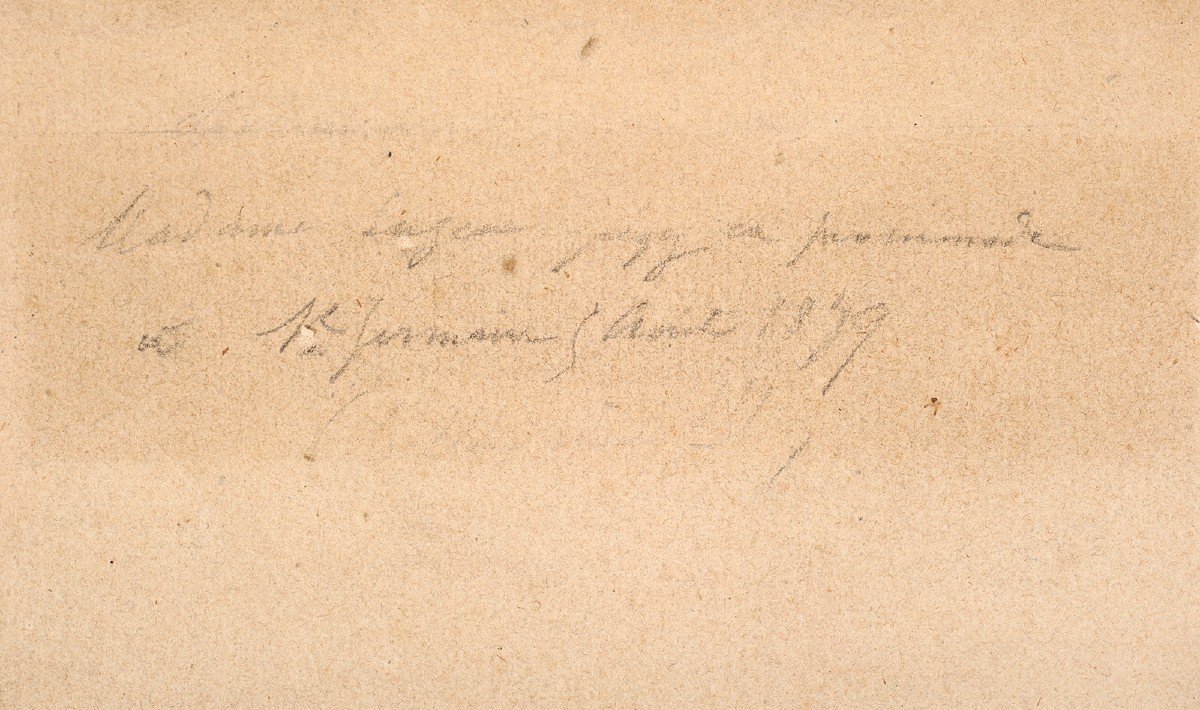



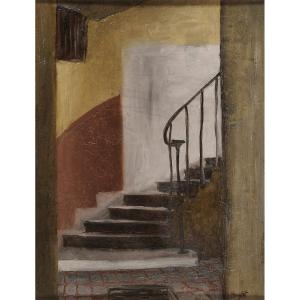


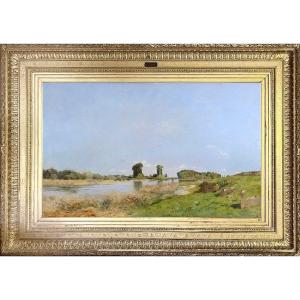


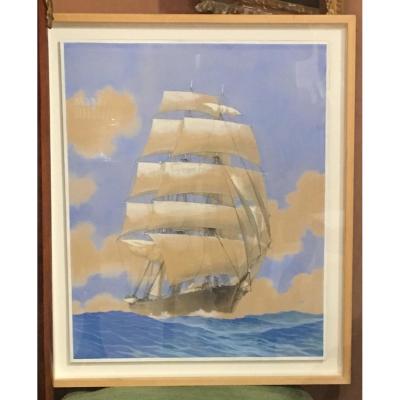
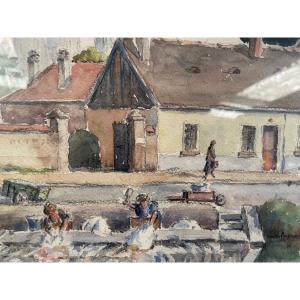

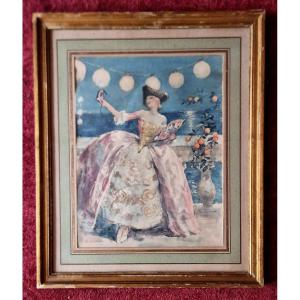



 Le Magazine de PROANTIC
Le Magazine de PROANTIC TRÉSORS Magazine
TRÉSORS Magazine Rivista Artiquariato
Rivista Artiquariato
